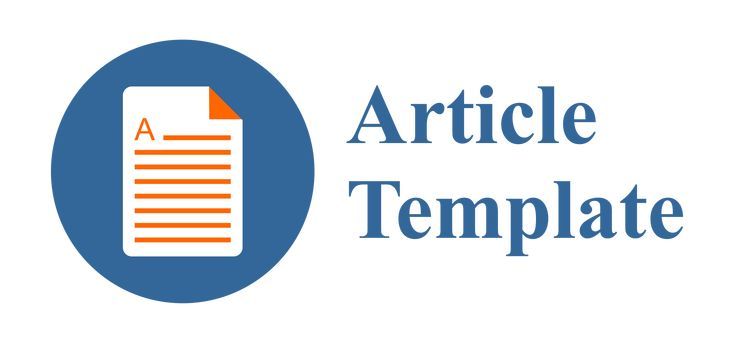Rancang Bangun Sistem Informasi Bank Sampah di Desa Paguyangan
DOI:
https://doi.org/10.29408/edumatic.v5i1.3171Keywords:
Garbage Bank, Garbage, Information Systems, WaterfallAbstract
Garbage is the residual material resulting from a production process, both industry and households. Based on Brebes district's statistical data, the Paguyangan sub-district is in fourth place with an average of 249.62 m3 of garbage per day. Paguyangan is one of the villages in the Paguyangan sub-district. Paguyangan has a garbage problem where people still have the habit of throwing garbage in the river and yards around the house. Based on this, the Paguyangan Village Hall plans to build a garbage bank to overcome the problem. A garbage bank managed activities such as recording savings transactions. This study conducted a web-based design of the Garbage Bank Information System (SIBS). SIBS is an information system used to help process garbage transactions at a garbage bank. The purpose of this SIBS is to facilitate officers and customers in processing services at the garbage bank. The methodology used in system development is the Waterfall method. SIBS development uses PHP as a programming language and MySql as the DBMS. The result of this research is a garbage bank information system. SIBS can be used in the management of garbage management transactions. Testing the system using Blackbox Testing and MOS. SIBS is easy to operate from the test results obtained.
References
Afuan, L. (2018). Sentimen Analisis Di Twitter ( Studi Kasus : Resepsi Pernikahan Putri Presiden Ri Ke-7 ). Seminar Nasional Teknologi Informasi Dan Multimedia, 6(1), 1–6.
Ariyadi, B. M., & Bahar. (2016). Model Aplikasi Sistem Pelayanan Terpadu Pada Kantor Kelurahan. Teknik Informatika, 5(1), 877–1021.
Budiman, A., & Mulyani, A. (2017). Rancang Bangun Aplikasi Sistem Informasi Persedian Barang di TB. Indah Jaya Berbasis Desktop. Jurnal Algoritma, 13(2), 374–378. https://doi.org/10.33364/algoritma/v.13-2.374
Fauzi, R., Wibowo, S., & Putri, D. Y. (2018). Perancangan Aplikasi Marketplace Jasa Percetakan Berbasis Website. Fountain of Informatics Journal, 3(1), 5. https://doi.org/10.21111/fij.v3i1.1824
Jaya, T. S. (2018). Pengujian Aplikasi dengan Metode Blackbox Testing Boundary Value Analysis (Studi Kasus: Kantor Digital Politeknik Negeri Lampung). Jurnal Pengembangan IT (JPIT, 03(02), 45–48.
Joanda, A. D., Priyandari, Y., & Zakaria, R. (2014). Perancangan Sistem Informasi Manajemen Layanan Jasa Teknologi dan Kerjasama di Lembaga DEF. Jurnal Sistem Informasi, 10(2), 94–107.
Juliany, I. K., Salamuddin, M., & Dewi, Y. K. (2018). Perancangan Sistem Informasi E-Marketplace Bank Sampah Berbasis Web. Semnasteknomedia Online, 6(1), 19–24.
Kamil, H., & Duhani, A. (2016). Pembangunan Sistem Informasi Pelayanan Jasa Laundry Berbasis Web Dengan Fitur Mobile Pada 21 Laundry Padang. Seminar Nasional Sains Dan Teknologi, 1–9. Jakarta: Fakultas Teknik Universitas Muhammadiyah Jakarta.
Kusrini, W., Fathurrahmani, F., & Sayyidati, R. (2020). Sistem Pakar untuk Diagnosa Penyakit Ayam Pedaging. Edumatic: Jurnal Pendidikan Informatika, 4(2), 75–84.
Lidimilah, L. F., & Hermanto. (2018). Sistem informasi Bank Sampah Sukorejo berbasis client server. Jurnal Ilmiah Informatika, 3(1), 193–198.
Muntohar, A. (2020). Sistem Informasi Data Klien Berbasis Java Pada Kantor Notaris dan PPAT Arif. Edumatic: Jurnal Pendidikan Informatika, 4(2), 58–67. https://doi.org/10.29408/edumatic.v4i2.2515
Mustianti, I. B. K. W., & Albar, M. A. (2020). Sistem Informasi Tugas Akhir Program Studi Teknik Informatika. JTIKA, 2(1), 19–29.
Presman, R. S. (2012). Rekayasa Perangkat Lunak Pendekatan Praktisi Edisi 7 (Buku Satu). Yogjakarta: Andi.
Samudi, Brawijaya, H., & Widodo, S. (2018). Penerapan Model Waterfall Dalam Sistem Informasi Bank Sampah Berbasis Web. Jurnal Ilmu Pengetahuan Dan Komputer, 3(2), 245–250.
Septavia, I., Gunadhi, E., & Kurniawati, R. (2016). Sistem Informasi Penyewaan Mobil Berbasis Web di Jasa Karunia Tour And Travel. Jurnal Algoritma, 12(2), 534–540. https://doi.org/10.33364/algoritma/v.12-2.534
Silva, E., Galvão, L., Mota, E., & Iano, Y. (2015). Mean Opinion Score measures based on E-Model during a VoIP call A Single Comparison On-line and Off-line. The Eleventh Advanced International Conference on Telecommunications 0HDQ, 132–135. https://doi.org/10.13140/RG.2.1.1394.9281
Statistik, B. P. (2020). Rata-rata Volume Sampah/Hari Menurut Kecamatan di Kabupaten Brebes.
Suprapto, D. D. A., Fauziah, F., Fitri, I., & Hayati, N. (2020). Pengembangan Aplikasi Sistem Informasi Smart Register Online Berbasis Android Menggunakan Algoritma BruteForce. Edumatic: Jurnal Pendidikan Informatika, 4(1), 47–56.
Tiawan, I. A., & Afuan, L. (2020). Aplikasi Pengelolaan Kerjasama Pembuatan Projek Pada Dinas Komunikasi dan Infromatika Banyumas. Jurnal Teknik Informatika (JUTIF), 1(1), 13–18.
Welda, W., & Minartiningtyas, B. A. (2017). Sistem Informasi Pengelolaan Kerjasama Bidang Humas pada STMIK STIKOM Indonesia. Jurnal Sisfokom (Sistem Informasi Dan Komputer), 6(2), 86–92. https://doi.org/10.32736/sisfokom.v6i2.252
Yulistina, D., & Arianti, B. D. D. (2019). E-Katalog Sebagai Sistem Informasi Pemasaran Kopi Sapit Berbasis Web. Edumatic : Jurnal Pendidikan Informatika, 3(2), 45–52.
Downloads
Published
How to Cite
Issue
Section
License
All articles in this journal are the sole responsibility of the authors. Edumatic: Jurnal Pendidikan Informatika can be accessed free of charge, in accordance with the Creative Commons license used.

This work is licensed under a Lisensi a Creative Commons Attribution-ShareAlike 4.0 International License.




